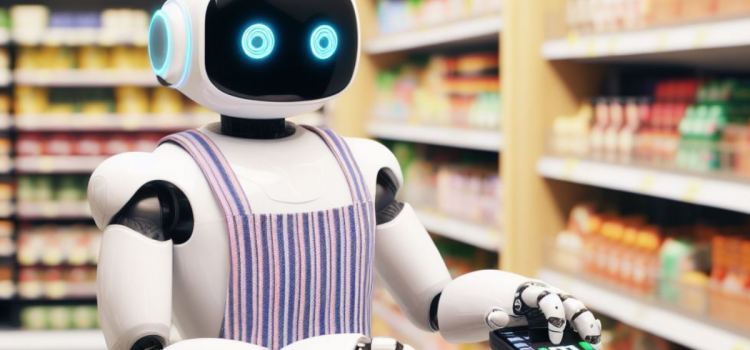

This article is an excerpt from the Shortform book guide to "The Future Is Faster Than You Think" by Peter H. Diamandis and Steven Kotler. Shortform has the world's best summaries and analyses of books you should be reading.
Like this article? Sign up for a free trial here.
Is autonomous shopping the future of retail? Will there ever be self-driving robots to deliver your goods?
As technologies mature and become more widely implemented in the retail industry, Peter H. Diamandis and Steven Kotler predict that shopping will evolve. This will be done in two major ways: automated shopping and tailored personal preferences.
Keep reading to learn how technology and shopping will go hand-in-hand in the future.
A Streamlined Shopping Experience
The authors of The Future Is Faster Than You Think explain that AI, with its ability to learn and adapt, will converge with other exponential technologies to automate much of our shopping experience, making the whole process more seamless and efficient. These are ways technology and shopping could work together:
- Smart shelves with weight sensors will automate restocking by alerting employees when products are removed.
- 3D printers will produce custom products like clothing and hardware at your local store.
- Self-driving robots will deliver items to your door.
Already, aspects of this futuristic shopping process have become reality. The authors point to the Amazon Go stores as a taste of what’s to come—you enter a store, put items into a bag, and are automatically charged for the items you take when you exit through the gate.
| Challenges to Implementing Autonomous Shopping Over four years since the publication of The Future Is Faster Than You Think, autonomous shopping still hasn’t replaced traditional brick-and-mortar shopping. Experts suggest several reasons why more stores haven’t implemented autonomous shopping: First, the shape and size of a store can affect how easy it is to implement autonomous shopping systems. It’s significantly harder to track shoppers and products in larger stores like Whole Foods or Walmart (which are often 178,000 square feet) than in an Amazon Go store, which is typically around 2,300 square feet. Second, it’s time-consuming and expensive for stores to add autonomous shopping technologies like smart shelves or 3D printers. Retailers have to close stores for weeks to do so, and the process would take years to implement on a nationwide scale. Third, autonomous stores lack flexibility. Retailers often rearrange products, change displays, and adjust prices (such as putting items on sale)—and when they do, they’d also have to make changes to their sensing and tracking technologies. Additionally, these technologies can be thrown off by customers rearranging and misplacing products. It’s worth noting, as well, that since the publication of Diamandis and Kotler’s book, Amazon has closed several of its Amazon Go locations. Observers have suggested several reasons, ranging from the difficulty of stocking to the negative effects of the Covid lockdowns on retail. But one possible explanation suggests a more fundamental difficulty self-service stores face: Some customers have indicated that the stark lack of humanity in the setting makes the experience unpleasant. |
Personalized Recommendations
Diamandis and Kotler write that not only will shopping become largely automated, but you’ll also be making fewer shopping decisions. AI algorithms will be able to analyze your shopping history, browsing behavior, and so on, and will learn your preferences over time. With these capabilities, AI will become a digital personal assistant of sorts. For example, it will be able to order products you routinely buy without your oversight and make product suggestions based on the data it’s collected about your tastes and preferences.
(Shortform note: Some experts argue that the personalization that comes with AI can be harmful for consumers if retailers misuse this information. Sellers could use AI to subtly manipulate consumers to spend more or to buy certain products—for example, they might adjust the prices of products or services based on demand or your personal purchase history, causing you to spend more money than you otherwise would have.)

———End of Preview———
Like what you just read? Read the rest of the world's best book summary and analysis of Peter H. Diamandis and Steven Kotler's "The Future Is Faster Than You Think" at Shortform.
Here's what you'll find in our full The Future Is Faster Than You Think summary:
- Why change and technological progress are occurring at breakneck speed
- How cutting-edge technologies will revolutionize the ways we live and work
- How entertainment will change from being passive to active






